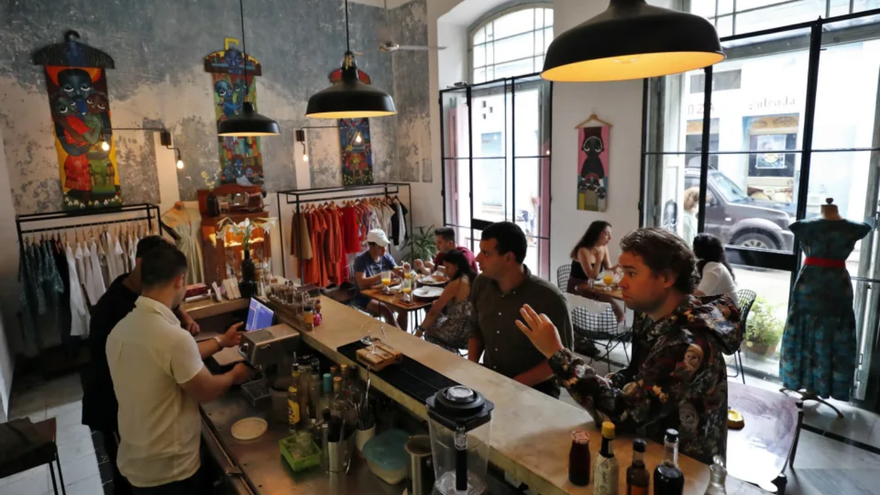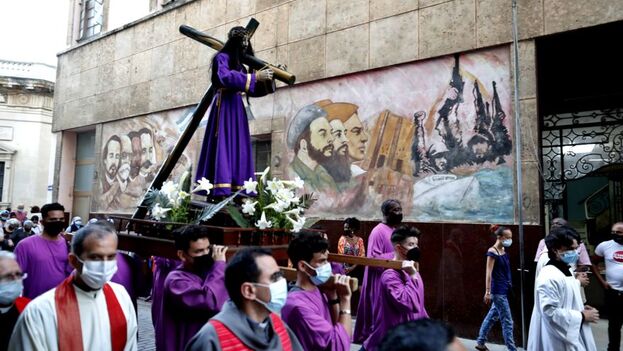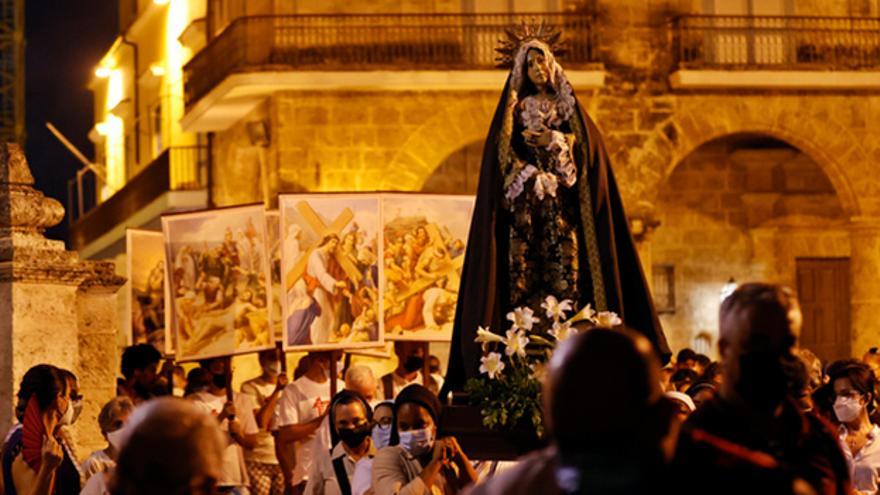
![]() EFE (via 14ymedio), Raquel Martor, Havana, 8 June 2022 — Cuban Loypa Izaguirre, with her small business in Old Havana that offers designer clothes, cocktails and music, is an example of the new generation of young entrepreneurs that is emerging on the island despite the crisis and the pandemic.
EFE (via 14ymedio), Raquel Martor, Havana, 8 June 2022 — Cuban Loypa Izaguirre, with her small business in Old Havana that offers designer clothes, cocktails and music, is an example of the new generation of young entrepreneurs that is emerging on the island despite the crisis and the pandemic.
The 33-year-old has been promoting the Color Café fashion workshop and café since 2018, a multidisciplinary and modern space installed in a remodeled 1900 premises, an establishment that has just reopened after two years of forced closure due to restrictions to counteract covid-19.
“Every day there is a new challenge that changes your perspective and you have to face it,” Izaguirre tells Efe in an interview. The young woman, who declares herself self-taught, acknowledges that there are plenty of problems in Cuba, but she believes that the “positive vibe” must be maintained with the philosophy that “no doesn’t exist.”
Despite the paralysis caused by the pandemic, Izaguirre chose not to stay home. “We couldn’t stop sewing,” she stresses. Although she was forced to close Color Café and materials were missing, she searched among her friends for fabrics, thread, buttons and other recyclable materials to make masks and clothes.
Then, when steps could be taken towards normality, she reopened and called her employees with a “we start again.” continue reading
The lack of some food in her café-bar, as a result of the shortage of basic products that the Island has suffered for months, was remedied with “a healthy proposal that has been well received by customers.”
She brought fabrics and remnants from abroad, which have been turned into small purses, bags and other wardrobe accessories. Skirts, blouses, dresses and clothes that fit various sizes make up the “comfortable and fresh” proposal of this Havana company, one of the more than 3,600 micro, small and medium-sized enterprises (MSMEs) approved in recent months.
Izaguirre laments the high prices in her store, but explains that she does not have the capacity or the resources to increase his production.
“The fabrics are expensive, the workshop is small and I have to pay my employees well (15 in total) so that they feel stimulated to work every day and make an effort to make quality garments,” she summarizes.
Among her clientele there are foreign women living in Havana, although Cuban women also frequent her store, and she tries to favor them with “adjusted prices,” and those who are looking for “custom-made” men’s shirts have joined.
White, red and blue, ruffles, flowing skirts, and stylistic references inspired by the 40s and 50s prevail in the designs. Her commitment is based on “pleasing customers, who understand the importance of coming to a workshop and making clothes.”
An example of her way of facing challenges was her first individual catwalk, just a few days ago in Havana, which was not overshadowed despite a monumental downpour and the still persistent fears about covid in public spaces.
“All of us who worked on it knew each other and we were willing for the job to come out, for that catwalk to be done, totally inclusive,” she says.
Her new collection, “Seasons,” brings together 30 pieces with color, elegance, classic style, daring and a mixture of cultures, conceived for plus size women, the elderly and girls, exhibited on models of the traditional type, of various races and gender.
Izaguirre explains that in Cuba there are currently those who are torn between staying in the country and trying to carry out a project there and those who choose to migrate.
“My decision has been to stay with the perspective of opening up with my Cuban, tropical style and touch, with a design and added value that I believe would make it possible to project myself abroad, and we will try,” she says.
As part of its identity, the brand has a logo that resembles a coffee pot — “a symbol of Cuban identity” — but it is really the idealized silhouette of a woman, explains this entrepreneur.
The young woman is satisfied with the results she is achieving. “They have accepted us, we have positioned ourselves, they recognize the quality and the work we are doing,” she says.
The project, she adds, is “sustainable” because she is convinced of “always finding a solution” with “creativity and human capital,” although she admits that she would like to have more resources.
His look is “to the future” to leave a mark: “That people remember me as a girl who created something beautiful and that is my feeling and what I put into what I do.”
____________
COLLABORATE WITH OUR WORK: The 14ymedio team is committed to practicing serious journalism that reflects Cuba’s reality in all its depth. Thank you for joining us on this long journey. We invite you to continue supporting us by becoming a member of 14ymedio now. Together we can continue transforming journalism in Cuba.


